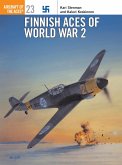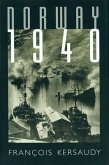Entering service with the Dutch air force from early 1938, the aircraft was also built under license in Denmark and Finland. Production was also scheduled to commence in Spain too but Nationalist forces overran the factory before this commenced. The Dutch D.XXIs saw less than a week of action following the German invasion of the west on 10 May 1940, with many of the country's 28 fighters being destroyed on the ground. However, those that survived the initial onslaught inflicted losses on the Luftwaffe, 15 pilots sharing in the destruction of 14 German aircraft (fighters, bombers and transports). By then, however, the D.XXI had found everlasting fame in Finland during the Winter War of 1939-40. Proving itself a real thorn in the side of the Soviets, the fighter, operating in primitive conditions and against vastly superior numbers, Finnish D.XXIs racked up an incredible score against the Red Air Force, and in particular its bomber units. No fewer than ten pilots became aces during this brief, but bloody, campaign, with a similar number claiming four victories and subsequently 'making ace' in later types. The sturdy D.XXI was highly rated by the leading Finnish pilots of the time, boasting a good rate of climb and the ability to break off combat when required thanks to its high speed in a dive. The D.XXI also has the distinction of producing the first 'ace in a single mission' in World War 2, when then 1Lt Jorma Sarvanto shot down six Ilyushin DB-3 bombers on 6 January 1940. After spending a year providing home defence and flying coastal patrols during the early stages of the Continuation War in 1941, all surviving Finnish Fokker D.XXIs were relegated to the reconnaissance role, which they performed through to the end of hostilities in September 1944.








